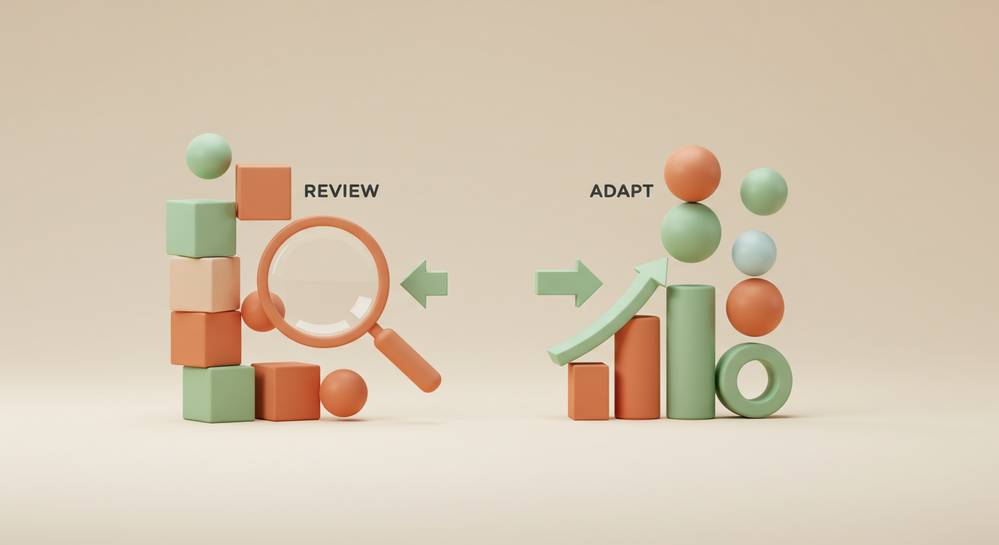How to create a balanced daily routine for a better life
In a world of constant demands and distractions, feeling overwhelmed and unproductive is common. The solution lies not in working harder, but in working smarter by learning how to create a balanced daily routine. A well-structured day is the foundation for enhanced focus, reduced stress, and overall well being. This guide provides a clear, actionable framework to help you design a routine that aligns with your personal and professional goals.
Understand the core pillars of a balanced routine
A truly balanced routine is not about cramming every possible task into your day. It is about intentionally allocating time to different areas of your life to support your overall well being. Before you start scheduling, it is crucial to understand the essential components that require your attention. Think of these as the foundational pillars holding up your daily structure. Mastering these components is the first step in learning how to create a balanced daily routine.
- Productivity and Work: This includes your job, career development, or major projects. It is about focused effort to achieve professional or personal goals.
- Physical Health: This pillar covers the essentials of healthy eating and exercise, plus adequate sleep. It is non negotiable for maintaining energy and preventing burnout.
- Mental and Emotional Rest: This is your time for hobbies, relaxation, or meditation. It is vital for managing stress and sparking creativity.
- Social Connection: Nurturing relationships with family, friends, and your community. This pillar fosters a sense of belonging and support.
Consistently ignoring any one of these pillars will lead to imbalance. This can cause stress and diminish your performance in all other areas of life. Acknowledging their importance is key to building a sustainable and fulfilling schedule.
Audit your current schedule and set clear priorities

You cannot build a new structure without knowing the layout of the old one. The first practical step in learning how to create a balanced daily routine is to get an honest picture of how you currently spend your time. This awareness is the catalyst for meaningful change. Simply telling yourself you will change is not a strategy; data is what allows you to start setting priorities effectively.
Track your time honestly
For three to five days, log all your activities. You can use a simple notebook or a time tracking app. The goal is not to judge yourself but to collect objective data. Record what you are doing in 30 or 60 minute intervals. Be specific: note time spent scrolling social media, commuting, preparing meals, and working. This audit will create a clear map of where your 24 hours actually go.
Identify your non negotiables
With your time audit complete, review your core values. What activities are absolutely essential for your well being and success? These are your non negotiables and will become the backbone of your new routine.
- Thirty minutes of daily exercise.
- Uninterrupted family dinner time.
- One hour of focused deep work.
- Eight hours of quality sleep.
Listing them out ensures that what matters most to you is always scheduled first. For more ideas on building a healthy foundation, explore our undefined.
Design your routine with realistic time blocks

With your pillars defined and priorities set, you can now become the architect of your day. The most effective method is time blocking, where you assign a specific purpose to each block of time. This proactive approach is a cornerstone of how to create a balanced daily routine that works. It prevents you from reactively responding to demands and ensures your priorities get the time they deserve.
The morning anchor
How you start your morning often dictates the tone for the rest of the day. Create a consistent 60 to 90 minute block before engaging with external demands like email or news. This block should focus on your physical and mental well being. It could include hydration, light exercise, meditation, or journaling. This is your time to ground yourself before the day begins.
Protected deep work blocks
Identify your peak productivity hours, usually a two to four hour window. Schedule your most demanding cognitive tasks during this time. Treat this block as an important, unbreakable meeting. Turn off notifications and communicate your unavailability. Protecting this time is crucial for making significant progress on your most important goals.
The evening wind down
Your routine should not end when work does. Create a deliberate transition away from work and into a state of rest. An evening wind down of 30 to 60 minutes can drastically improve sleep quality. Disconnect from screens, tidy your space for the next day, and engage in a relaxing hobby. This signals to your brain that it is time to recharge.
Implement review and adapt for long term success

A routine is a guide, not a rigid prison. Life is unpredictable, and the key to long term success is building a system that can bend without breaking. Rigidity leads to frustration and abandonment, while flexibility fosters resilience. The final step in learning how to create a balanced daily routine is mastering this adaptability. Your goal is to create a sustainable practice, not a short lived, perfect schedule.
- Start Small: Do not try to overhaul your entire day overnight. Introduce one new block or habit at a time, such as a consistent morning anchor. Once that becomes natural, build upon it.
- Schedule Buffer Time: Always add 10 to 15 minutes of buffer time between your scheduled blocks. This accounts for transitions, unexpected interruptions, and allows your schedule to breathe.
- Perform a Weekly Review: Set aside 30 minutes every Sunday to review what worked and what did not. Were your time estimates realistic? Adjust the following week’s schedule based on your findings.
- Have an If Then Plan: Plan for disruptions. For example, IF an urgent meeting happens during a deep work block, THEN you will reschedule that block for the afternoon. This proactive planning prevents one disruption from derailing your entire day.
Creating and maintaining a balanced daily routine is an act of intention. It is about shifting from a reactive state to a proactive one, where you are in control of your time and energy. This is not about perfection but about progress and creating a sustainable framework that serves your life goals. For more insights on building a healthier, more intentional life, explore the resources at Health Horizon Line and take the next step in your wellness journey.


0 Comment